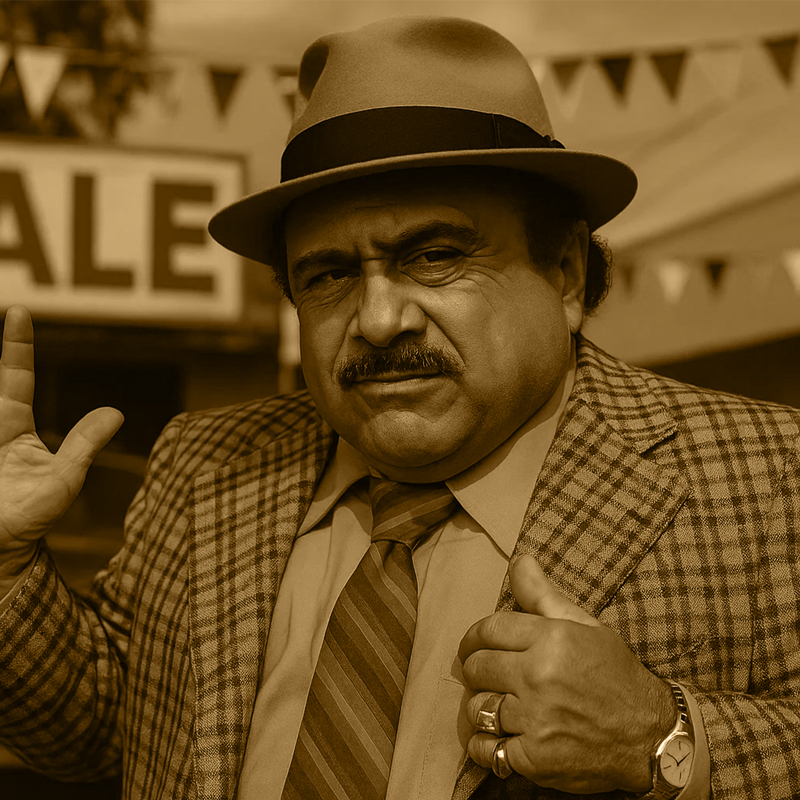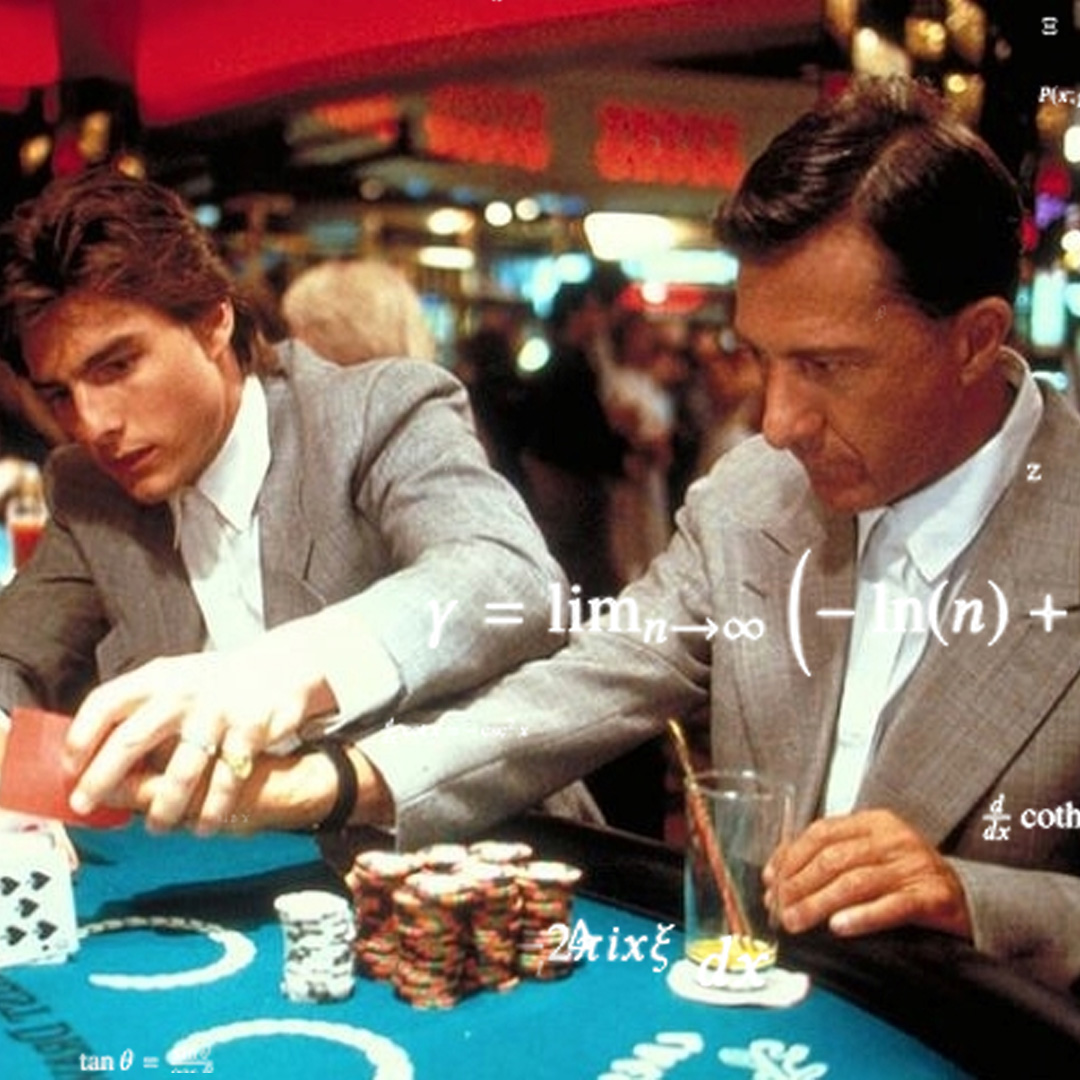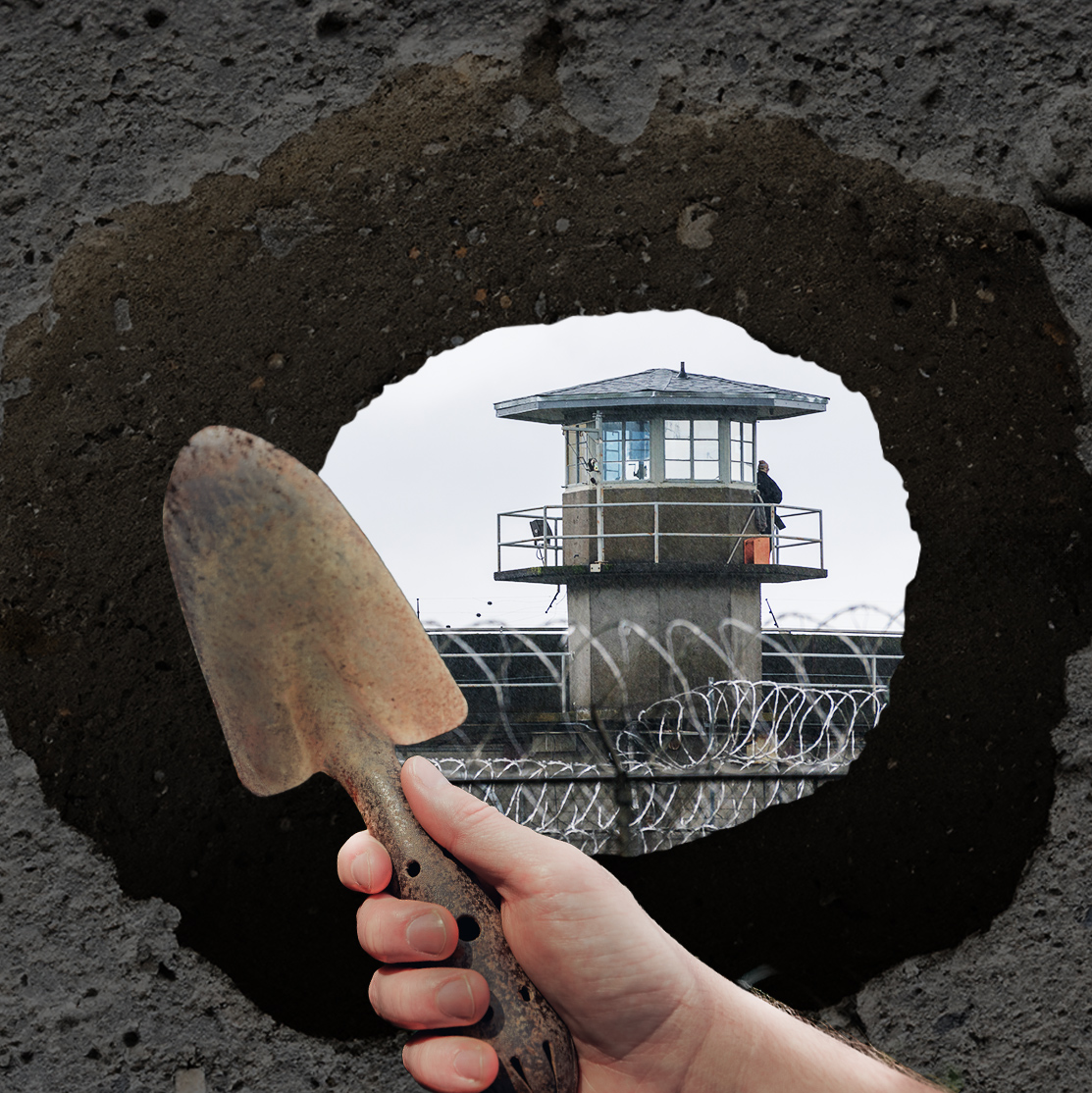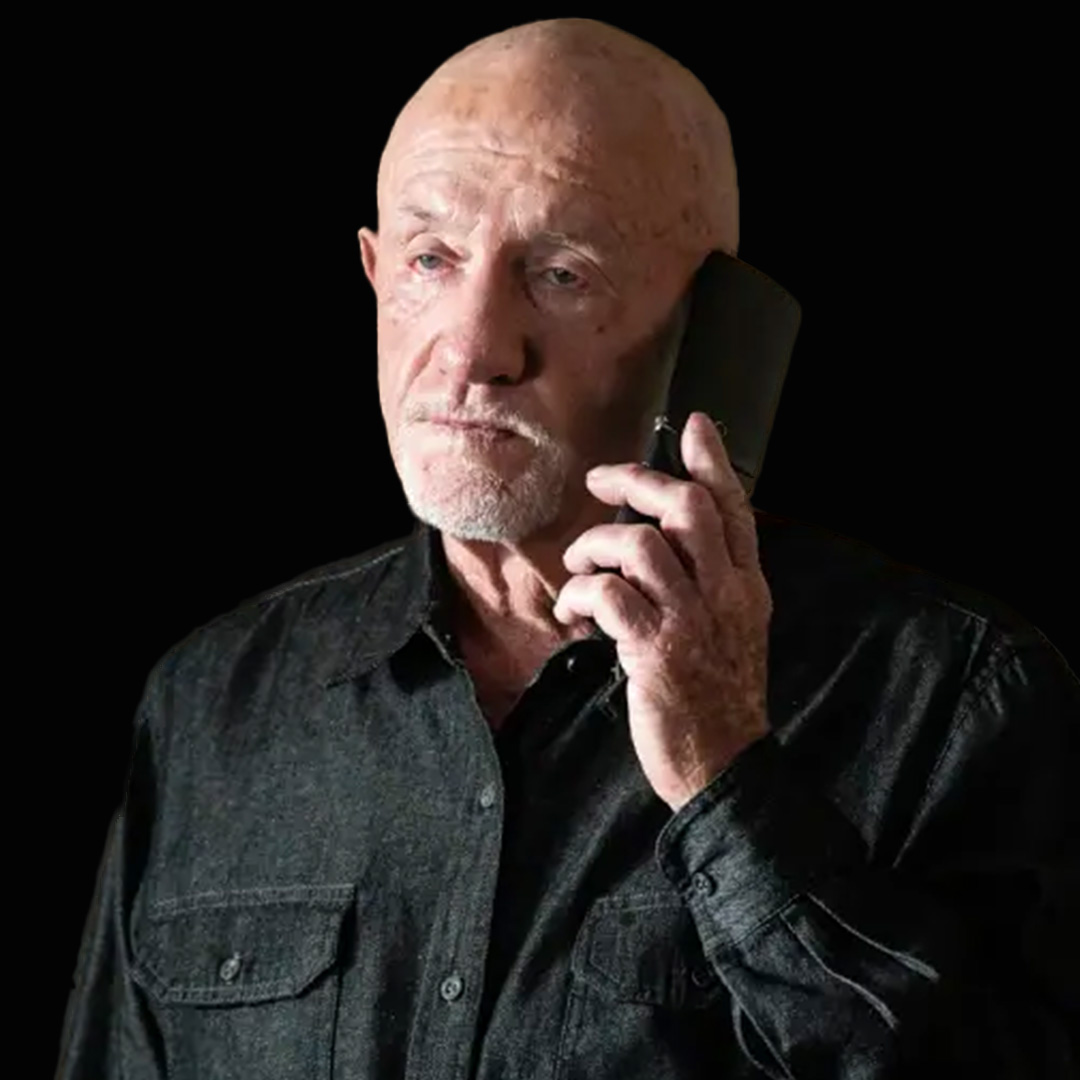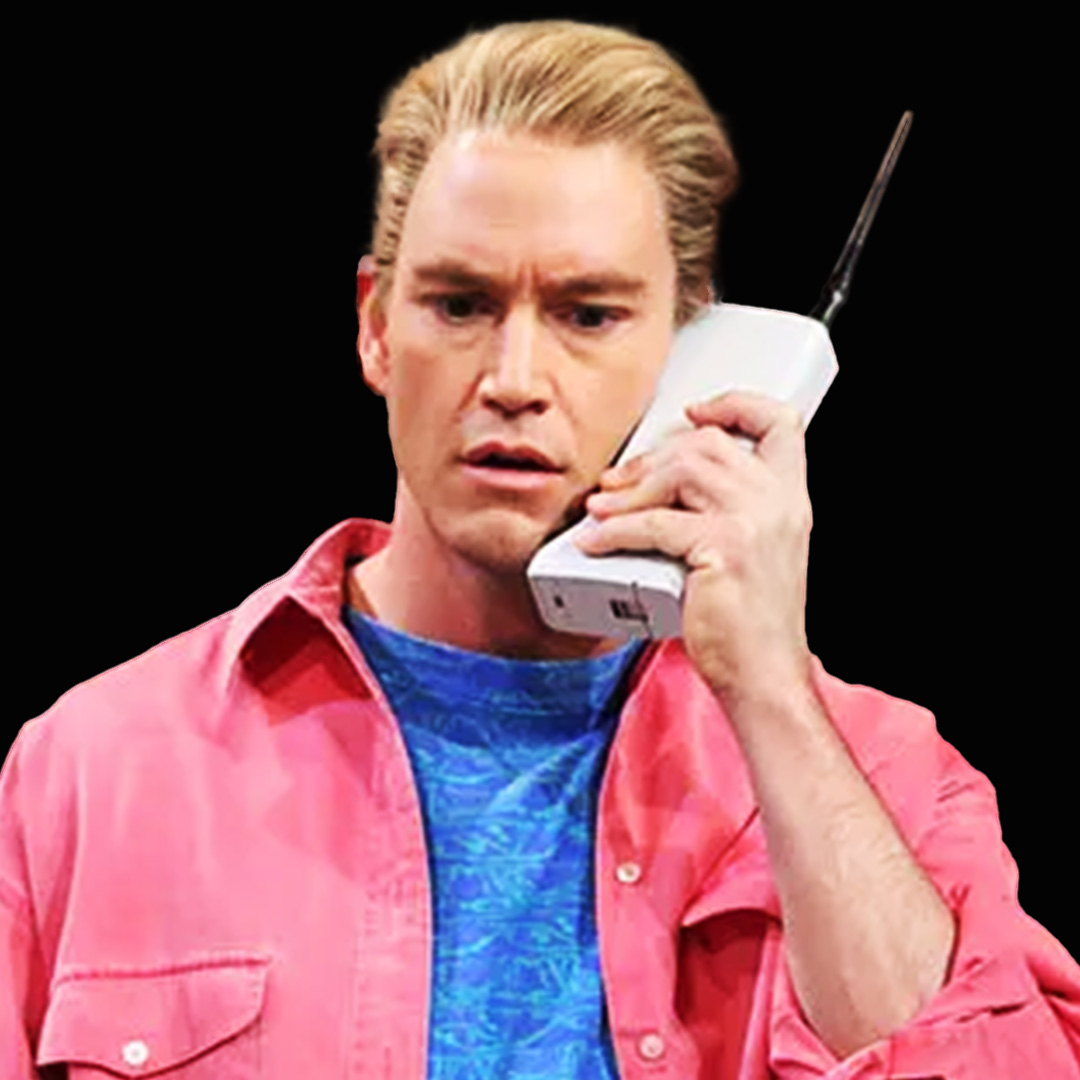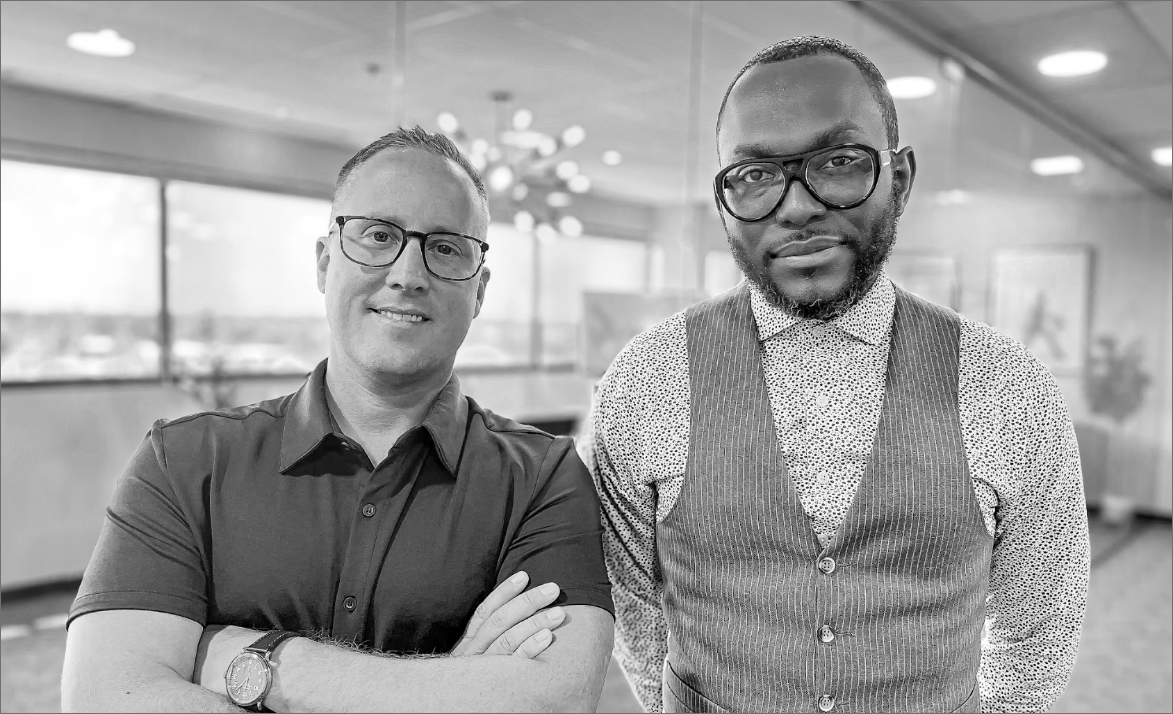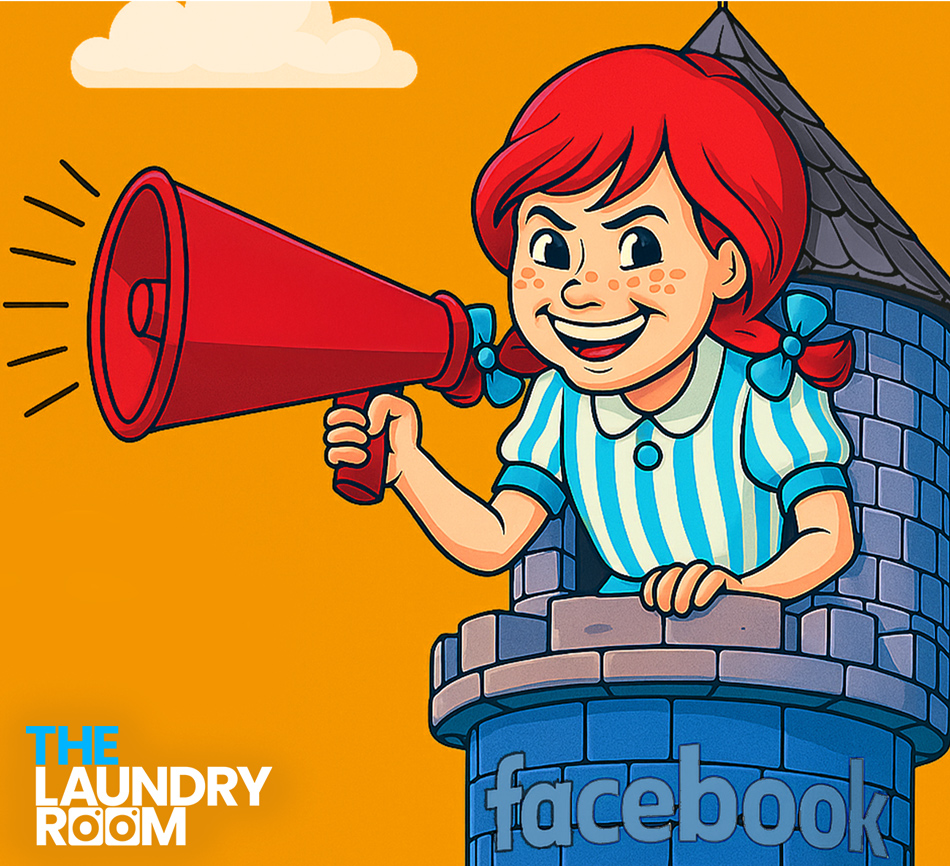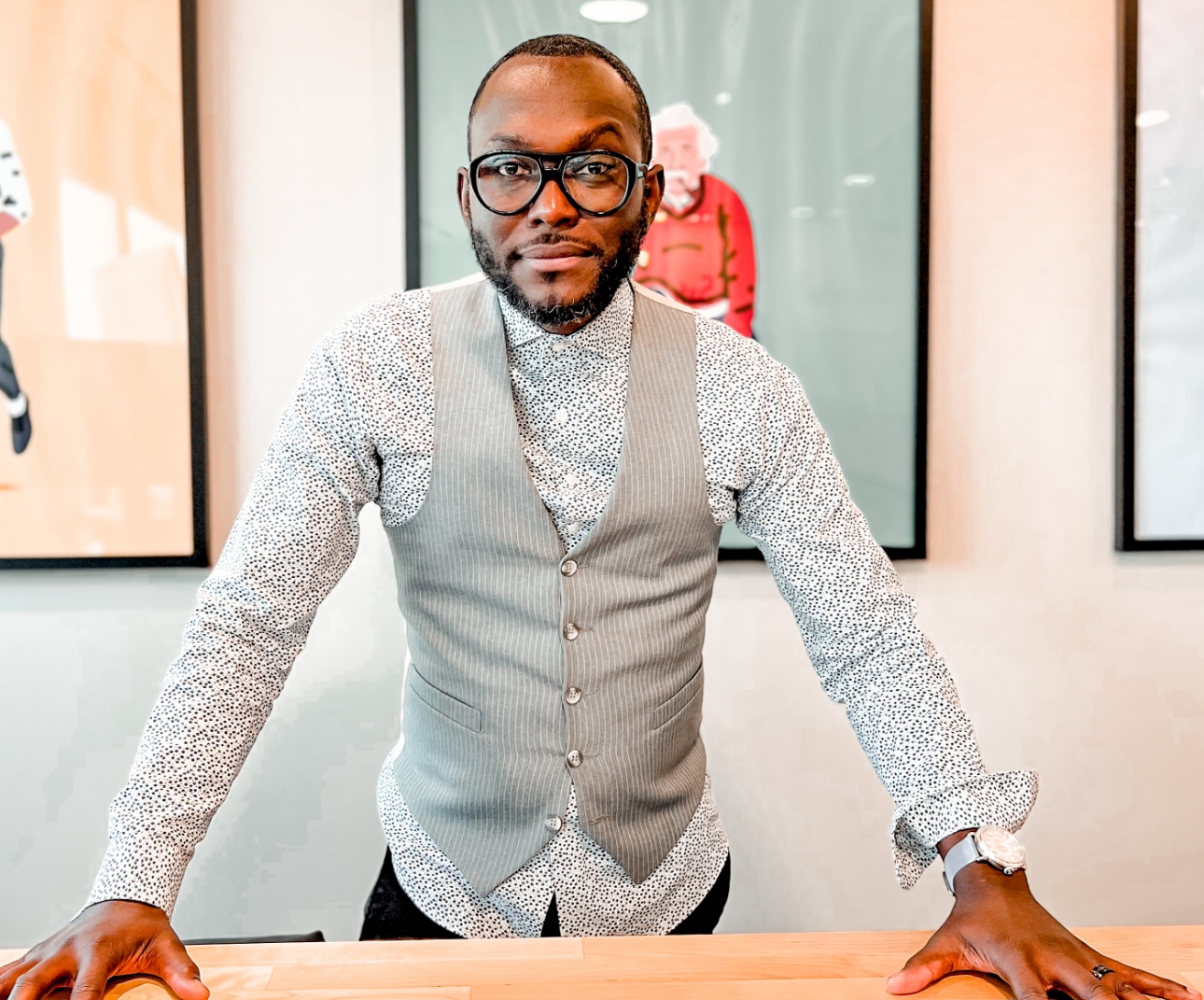00:08 – 00:49
Welcome to The Laundry Room. Here we are, I’m Nick Skislak.
Michael Taylor here. Hey, you said that kind of like it was coming in to a theater.
How’s everybody feeling tonight? What’s our Jimmy Fallon thing? And we’re back.
Yeah, man.
All right, Mike, what are we talking about today?
There’s a lot to talk about, but I think if we had to choose something that’s been top of mind for us, it would be about removing the distractions of trying to be all things to all people
00:49 – 01:28
as a business. When you’re selling, when you’re trying to grow, it’s really easy to try to grab every opportunity and not hone in, not to focus on what you’re best at, where the need is greatest and you have the best opportunity to meet that need. And we’re living that.
We are in that moment as we speak. And I think it’s a great topic for us to shed some light on and some perspective and hopefully help others who are in that same scenario.
01:28 – 01:47
I remember a mentor told me when I was first starting out on this, he said, go an inch wide and a mile deep. And I had no idea what he was talking about when he said it, but I’m like, okay, cool. I didn’t really realize what he meant until like probably 10 years after that.
And what he was talking about is pick your specialty,
01:47 – 02:12
stay in your lane and be the very best in your field, in your niche. And man, how hard is that to do? That is so difficult to do.
I think part of it too, when you’re starting out like and you’re on that entrepreneur folding table phase of your business, like how much you want revenue, how much you want to grow your business.
02:12 – 02:37
Like, and we’ve done it. We’ll take, we took a lot of things that we really had no business taking.
Right.
Right. And it was all out of, you know, when you’re in it, you’re like, hey, I’m here to help this. This person needs my help.
Of course we’re going to help them. And you think you’re doing it out of love and passion, and oh, we can be a great fit for them, when in reality, it is not what we were built, not what you’re built
02:37 – 02:57
for, not where you could do your very best work.
Yeah.
And how much that cost you in the long run.
And I think the challenge is this is, this is somewhat cliche because not a new topic, right? This is not a new concept of nicheing out. But there’s a difference between hearing that concept and then actually living it.
02:57 – 03:31
It takes some guts. It takes a lot of guts to walk that path.
That is a, there’s a big line, thick line between those who talk about or conceptualize that. But when you are actually in it and you’re faced with having to turn down an opportunity, turn down money, to be specific, because it doesn’t align with what you’re best at. It doesn’t align with where you can provide the most value.
03:31 – 03:56
And that is hard for certainly firms, companies that are, you know, younger than seven years old, younger than five years old. That is, that’s a hard move.
You know what I think was tough for us to go on, even now, was tough, still is tough, is when we were starting out, it was very clear to us kind of this path that we were on.
03:56 – 04:28
It started with us understanding Google Ads, right? One of the first agencies that knew what Google Ads was, Yahoo, Yahoo Ads.
We started doing that and realized, okay, cool, we can get companies’ websites to show up on search engine results pages. This is great. Well, when we went in to show these reports, it wasn’t good enough.
So we said, all right, well, if we can get them on the first page, but we’re taking them to a website that’s garbage,
04:29 – 04:52
no one’s going to call, no one’s going to fill out a form, no one’s going to show up.
So, creative department was born.
Yeah, totally, like good entrepreneurs we were. We were like, okay, let’s create a creative department that can build these experiences, these landing pages, these websites, and have a better shot at getting a conversion. We did that,
04:52 – 05:14
that was cool.
Then we had to see something after the visit, right? We wanted to get deeper. Clients wanted to know, how many phone calls did I get?
How many form fills did I get from what you guys are doing? Then, CRM, or rather before CRM, it was tracking, phone tracking was started or added.
05:14 – 05:39
So as we continued to go down the funnel, so to speak, we added on all these…
Disciplines.
Yeah, and to what degree, like I would say, there was a lot of innovation happening during that period of time that needed to happen. So how do you keep, you know, because we think, I joke sometimes like, man, Mike, we could have been the be-all-end-all media agency.
05:39 – 06:12
Like we could have just been the Google ad people, but it would have completely changed who we would have served.
Because a company that wants world-class media buying is different from someone that wants world-class marketing or growth marketing to be specific.
And you know, I think it’s important not to conflate reiterating your service or innervating how you provide what you do with trying to do it for everyone.
06:12 – 06:42
Right, because the good part of us adding on those additional services or disciplines was we decreased the likelihood of becoming a commodity.
Yeah.
Right, and we finally hit us, we realized that people, clients, ultimately want value. And so, you coming with your trinket or coming with your, whatever your proprietary thing is, if that doesn’t do it for them, what will, what does?
06:42 – 07:02
And so, that sometimes requires reimagining what it is that you’re offering.
So, you got to keep doing that. I think the danger is when you try to do it for everyone. And we’ve had clients come to us and we asked them, well, who’s your service for?
Who can benefit from your product? Oh, it’s for everybody.
07:02 – 07:25
Yeah. Yeah.
Everybody needs this.
And we all eye roll, right?
Everybody can use this. Everybody needs to have this. And it’s like, okay, that’s maybe true, but who you’re focused on?
Yeah.
Who do you really, really want to be top of mind to? And that’s hard, especially as a business who is passionate about what they’re offering, right?
07:25 – 07:55
They’re dedicated to having everybody see it.
And unless you’re a brand, you know, a top 50 brand, you know, Coca-Cola, you can’t go into it that way.
Yeah.
I want to cope 50 feet away from you at all times. And that’s not real. And so that work of really figuring out who you want to be famous to,
07:55 – 008:19
we talk about that, who are the 1,100 people that you want to be famous to as a business, that when you put something out, it gets in front of them and they engage with it.
That takes commitment.
Courage.
Courage.
To be specific, Seth Godin, I think, wrote it. He said, to be specific is to be brave. It takes a lot of courage to be specific.
08:19 – 08:41
Yeah.
Because you have to say no. Saying no is a huge part of walking the path of being on point, being disciplined in what you’re going after. I was thinking about when, kind of as these new accounts came on, and I see this as a big challenge for businesses that we work with, a lot of companies that we work with,
08:41 – 09:03
it’s like, I don’t want to say it that way because I don’t want to turn off people that, or I don’t want to say it, I don’t want to put that on there because people that have done this might not like to see that.
And all of a sudden, you’re not talking to anyone and you got this really safe website that’s, we are this and we are that and we are great and
09:03 – 09:25
we have been around for this long and it talks to no one. I think for us over the years, it’s been difficult with all the kind of like our tool about innovations. We always get this like, oh my gosh, this can help a new group of people now.
Oh my gosh, we have this. So now we can service the garage door industry or wow, look,
09:25 – 09:59
now we can service the senior housing industry. And there’s like everything’s a shiny object.
And when, how easy it is for that to translate into the brand, into like how we are portrayed by others. When we were starting out, this is 10 years ago, I’d say, we were hot because we were digital. Like everybody else, all of our other peers, were basically traditional agencies that kind of transformed themselves into a digital agency.
09:59 – 10:24
We were actually natives of digital. We started in this field. So that, I think the, at that time, it was like, oh man, come to these guys because they’re the digital experts.
Well, now everybody’s a digital expert. Everybody’s a measured outcome expert. The only way to break through now is to really be specific to a niche.
10:24 – 10:56
And for us, I believe it’s way more industry specific rather than service offering specific. The service offering will continue to evolve, right? Today, it’s CRMs, it’s bid optimization tools, it’s word, for lack of a better example, plugins and custom applications that you can attach to your website experience.
These will change. These will change out and continue to evolve.
10:56 – 11:21
Where I think companies, for us anyways, have the best opportunities to really position yourself in an industry or in a position, perhaps.
Hey, we are the agency for marketing directors with teams of five or more. All right, you can run on something with that. We are the agency built for budgets under a million dollars
11:21 – 11:52
or over a million dollars.
Yeah, and there’s some good examples of this. You have, there are some known companies that do a good job of making that clear in how they communicate. You know, budget blinds, right?
You need blinds for your house. You don’t have to spend gobs of money. Dude, it’s a DIY, come to budget blinds.
So, I’m talking to Amy
11:52 – 12:22
two nights ago, and I, you and I had talked about product and service. Hey, do we want to go down this product route where we’ve got a tool belt here, customized to an industry, and go sell that product? Or do we want to keep it on the service side, which is, you know…
A la carte.
A la carte in the more traditional consultation type approach of, all right, you come work with us, you’re going to get Nick and
12:22 – 12:36
Mike, we’re going to come in, we’re going to assess, we’re going to look at your picture, we’re going to look at your business, we’re going to learn the nuances of what you have going on. And this is what we were throwing back and forth, and I’m telling Amy about it. I’m like, you know, I see a need for both.
12:36 – 12:56
I see an opportunity for both. I said, I think we have to pick one, and I think it’s hard for us. And she looks over at me and she goes, well, you guys aren’t mad men.
And I’m like, you’re right. And that leads me to my question of like, how much of this is not mad men anymore?
12:57 – 13:24
Where what is the value of having that strategic consultation with, you know, play the, we’re two sides of this coin, but I’ll play the, what’s the value of going to Nick and Mike for strategic consultation to go grow your business versus going to the product guy who’s already developed the framework of what your business needs to do?
Yeah.
This is where I have questions.
13:24 – 13:44
I love Amy.
Well, you guys aren’t mad men.
Sometimes the…
She knows how to…
Oh, yeah. Deflate the balloon, right?
Oh, yeah.
But, you know, it’s a good… That’s a good segue to what I was thinking as you were sharing that. There is…
How do you do that work of figuring out, where should I niche?
13:44 – 14:19
Where should I focus? You need that perspective, right?
You need context, and to do that work as a business, be it your peers, your colleagues, your mentors, your customers, being able to have someone who can level set where the true strengths. I had one of my best friends when we were younger. I remember him pushing on me about being administrative.
14:19 – 14:38
I’m a creative, right? So we’re… This is during the time where I was doing a lot of creative things.
He wanted you to be more admin?
Well, yeah. Well, because he saw it. You know, because it was in all of this creative, there was a need for administrative.
Yeah. And I would find myself doing some of that.
14:39 – 15:06
And I remember he made the comment, it pissed me off, man.
He was like, hey, you know, you’re really an administrative guy.
You should be…
You should lean in on that. That’s why I would do business with you. I’m like, get out of here.
I’m a creative man. Let’s go create something. But the people around you who you trust, who have perspective, usually know what you are.
15:06 – 15:27
And as a business, you have to make sure you have that perspective from your customers, from your colleagues, from your competition, to know, hey, where are we best suited? And then have that reality check. And Amy certainly does that for you.
Oh, for her.
You think you hot. You ain’t that hot, buddy. Right?
Well, and I wasn’t trying to be hot.
15:27 – 15:51
I was just giving her the insight of where we’re… And the perspective for her was good, you know.
She’s big agency. And she dug with the y’all ain’t mad men. But what she was really saying is, it ain’t mad men.
It’s not that whole big sweeping, big brush game isn’t really the ticket anymore. It’s not…
15:51 – 16:08
There’s not as much value.
And this is a pendulum. We talked about this. How this comes kind of back and forth.
You know, do you give it to all the one agency that’s going to control everything? Or do you segment this thing out and get specialists on each of those businesses? I think we’re very much in the segmented out.
16:08 – 16:44
Get specialties, get multiple teams working on specific initiatives.
Yeah. And certainly for companies that look similar to us, we’re a small boutique.
Yeah. Which would make us lean a little more towards being a full service to the clients that we serve.
Yeah. But in knowing if you can be resolved on who it is you’re going after, who you’re focused on, it makes the work of operating the business easier. Because now you don’t have to stretch yourself in on creating all of these
16:44 – 17:09
if this, then that statements.
And this is the, you know, what got you here won’t get you there. That is so true when you’re growing a biz. What you had to do to get from 1 to 5 mil is very different on what you got to do to get 10 to 20.
And that’s where you will get burned. Taking, saying yes to things that you’re not really that good at,
17:09 – 17:30
you’re not really that profitable on, your team’s not that excited about it. And you take that and it’s the time, that’s the thing.
You’re taking the dollar now that you’re not really making a lot of money on and you’re sacrificing all the things you could be doing to go get you more of the client that you’re actually looking for.
17:30 – 18:02
And then the insult to that injury is you deliver a subpar experience to the client anyway.
Client’s mad, perhaps.
Client’s not happy.
You’re upside down.
Yeah, yeah.
We know that game too.
Yeah, absolutely. So, maybe we talk about a couple of very specific things that a business can do to identify their niche. What are those things, what are those conversations that they can have to really understand who they should be going after?
18:02 – 18:41
There does seem to be a bit of defensiveness when these topics come up with businesses. It’s quite interesting how often that happens of like, well, we can’t say that because remember, we have that one account that’s, no, we work with bakeries, we have that one bakery account. It’s like, no, you don’t, like, that’s okay.
I think one of the biggest hurdles that we try to like, or challenges or I don’t know what you want to call it, but what we try to like get everybody calm with is, we’re not suggesting, certainly when you’re having this conversation with your squad, it’s not saying you’re not going to take any business besides that business anymore.
18:41 – 19:09
It’s not where the conversation goes. I think people instantly go to that of like, oh great, we’re not going to work with healthcare companies anymore, and that’s 75% of my book of business.
No, that’s not what we’re saying. What we’re trying to get to is who is the ideal customer? Who would you love to have 10 more of?
And then build your brand, your messaging, your energy, your media, all the money that you invest into going to get more of those.
19:09 – 19:27
Your other ones are still going to come. You’re still going to get bakeries, you’re still going to get healthcare companies, you’re still going to get gyms or whatever it is.
But you can make a decision, right, whether to take those. The point is you’re not investing time and money into fishing for those things. If they fall in the boat,
19:27 – 19:50
that’s your analogy.
They just flew up into the boat. That’s a good day. But if you’re going to do the work of actually trying to catch fish, you’ve got to be super specific with where you’re going, what you’re saying, and how you’re going to do it.
And that, I think, is the hardest part. It’s too why it’s so hard to think, oh my gosh, I’m only going to have one type of client for the rest of my career.
19:50 – 20:31
Well, maybe, probably not.
But your organization should certainly be positioned as an authority in this space.
Yeah.
It’s daunting. It’s really… And then I would say the second part would be getting, how are you going to say no?
How are you going to say no? I think that’s very important to do. Because you can say you’re going to say no, but if you don’t have a plan of how you’re actually going to do it, like, okay, what are we going to do when a new client comes in here or a new prospect comes in here, like this, and we know we shouldn’t take it, what are we going to do?
20:31 – 20:56
It’s not going to be, okay, let’s just tell them we’re going to pass. No. Your sales team will think of a million reasons why we should take the deal.
The CFO will too. The COO will too. Hey, we could just turn this, no.
You got, what is your criteria of it’s not a good fit, and then how are you going to deliver that message to the prospect?
20:56 – 21:21
Hey, I apologize, we just don’t work. Do you have referrals lined up?
Can you pass this on to somebody else? Is there another opportunity where you could, you know, pass it along? No one does the work of like, hey, how are we really going to turn them down?
And that’s a big deal. Because like you were saying with the, when that thing is in your, in for a sales guy too, when it’s on your table, it’s on your plate,
21:21 – 21:38
like it’s really hard to, if you don’t have a plan of, okay, I’m not going to eat the potatoes, I’m not going to eat the brownie when they drop it off. If they drop a brownie in front of you and you don’t have a plan on turning your fork upside down or throwing it behind you or whatever, it’s very difficult.
21:38 – 22:04
I remember years ago, one of the first peers in our space did this for us, you know, similar agency to us, and he sent a referral client our way. And I remember thinking, why would he send an account that he could fulfill the work on to us? And it was because he was super focused on
22:05 – 22:23
who his client was.
And he had a plan. It was, hey, I’m not best suited to help you. I know a team that is, let me send you their way.
And that was a boss move of him being very clear on who he wanted to go after, who he wanted to service.
22:23 – 22:43
And so taking that look at what’s my team dynamic, where what are we good at? What are we not good at? Where do we see opportunity as a business? And then putting the horse blinders on and and everyone. Yeah. Blinders. Yeah. And stay on the course. You know I would add a third one to your list. Stay on the course.
00:22:43:12 – 00:23:08:26
And so taking that look at what’s my team dynamic, what are we good at, what are we not good at, where do we see opportunity as a business, and then putting the horse blinders on. And having-
That’s a big one, the blinders.
Yeah, and stay in the course. You know, I would add a third one to your list. Stay in the course, and be consistent on that plan, because that is usually where it gets hard, right?
And don’t let there be a downturn in your sales, right? Now you start, anything that I can get in front of, I’m going to try to kill and bring it into the house, and it’s easy to get distracted from that discipline of,
23:09 – 23:35
this is who we’re going after. Until you need to make a business decision, right?
Because that will happen. Where you were going after one specific type of audience, something has changed. Remember when we did that, we tried to start a little hybrid brand mobile promote?
Remember that?
This was before mobile get in. Before…
Mobile get in,
23:35 – 24:05
I haven’t heard that term in a long time.
Before all sites were responsive and every phone could…
Yes, yes, yes.
And we had something for about…
Four weeks. It was longer than that.
I was going to say like 13 months.
Yeah, 13 months.
13 months. And that was a good example for us. It was specific to restaurants.
It was specific to local region, local footprint.
24:05 – 24:40
And that was it. If you were not a restaurant, and didn’t…
If you already had a mobile website, we were not the guy for you. If you didn’t have one…
Come and get it.
We were the guy. And that was a good example. Now, that thing was short lived, because shortly after, things changed in the market.
Gosh, and we’ve been so lucky with that, of adapting to what it is, and not just to the horse-blinder piece, of at least being aware enough to know where things were. Think if we staked it all on mobile websites,
24:40 – 25:03
right? Like, these are the guys with the latest, I think, of his Vine.
We remember those guys from Vine, that they were like rock stars on Vine. And then Vine went away, and like, they lost overnight. Like, that was it.
Vine. Man, I forgot about Vine. Yeah, and so there is the balance, is knowing when you need to pivot,
25:03 – 25:32
you need to shift, but knowing when you need to stay the course.
And that is as much art as it is science. You got to read some tea leaves on that. But for the companies or for the guy who is dealing with this right now, those three things that you mentioned, I think, are super important and are a game changer, because you’ll look up, your processes are better, your team is more disciplined.
Your retention is longer.
25:32- 26:00
For your clients and your employees, everything is not a crazy firestorm.
And, you know, I think there is a bit of, for us, guilty pleasure of doing the opposite. There is a bit of a high of…
Oh yeah, a challenge, a new challenge, a new…
Trying to be all things, all people, and cutting your teeth on…
Yeah, let’s go figure that out.
26:00 – 26:20
I will get a yes from this guy, right? And that’s the wrong mindset, man. That is…
That’s bad discipline. Yep. You want client to be trying to figure out how to get a yes from you.
Yeah, yeah, totally.
If you’re the biz, that client should be trying to figure out, how do I get this company to work with me?
26:20 – 26:45
And that is the position that you want. And that’s the hard look that needs to happen in the mirror.
Who are we best suited for? Who is… Who would seek after us?
Because if you can’t define that, or if you don’t know what that is, you have work to do on who you are as a brand, who you are as a company, what your value proposition looks like.
26:45 – 27:10
Got to know who is looking for me. And until you figure that out, you got homework to do.
Good stuff, Mike.
Thanks for tuning in, checking us out, guys. This is The Laundry Room. Vic, we’re keeping it going, man.
We’re keeping it going. Episode eight, let’s keep this happening.


